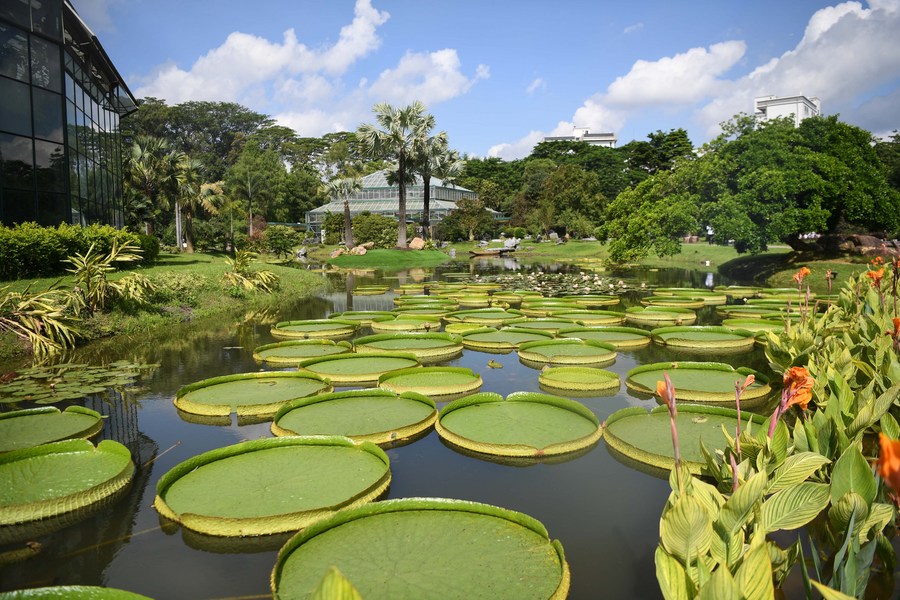Pursuing plant diversity conservation in China's national gardens

This aerial photo taken on April 5, 2023 shows tourists visiting flowers in a peony garden in Jiyuan City, central China's Henan Province. (Photo by Miao Qiunao/Xinhua)
It is May, the blooming season for peonies at the China National Botanical Garden (CNBG), and endless streams of visitors are taking photos of the flowers in all their glory.
The botanical garden, with its diverse landscape of hills, terraces and floodplains, has become home to more than 17,000 species of plant since it was inaugurated last April. Nearly 1,000 of them are rare and endangered species.
China is home to more than 37,000 known higher plant species, about one tenth of the global total, and has some of the richest plant biodiversity around the world.
The inauguration of the CNBG marks a milestone move to strengthen the country's biodiversity conservation. Over the past year, after completing a background survey of its plant resources, the garden has added more than 2,000 plant species, according to a report by the Science and Technology Daily.
A national strategic plant resource reserve and ex-situ conservation base for endangered plants, the CNBG is endowed with core functions including scientific research, introduction and domestication, and ex-situ conservation of plants, said Sun Guofeng, a senior engineer at the CNBG.
One such achievement relates to corpse flowers, an endangered species that has been cultivated at the botanical garden for more than 10 years. Their bloom last July marked the world's first "group flowering" of this plant under artificial cultivation.
The botanical garden, in collaboration with the Beijing Forestry University, has conducted a study on the corpse flowers, harvesting various scientific results such as uncovering the mystery of why its blooms are so stinky.
Also, researchers have discovered seven new plant species, including some orchids, in the botanical garden.
"According to the plan, nearly 300 hectares of forest to the garden's north will be incorporated as a conservation area for native plants, which will double the size of the entire botanical garden," said He Ran, an official with the CNBG.
The Beijing-based garden will have more than 30,000 species of living plants and a collection of 5 million specimens in the future, according to the official.

Photo taken on July 11, 2022 shows giant water lilies at South China National Botanical Garden in Guangzhou, capital of south China's Guangdong Province. (Xinhua/Deng Hua)
Another national garden, the South China National Botanical Garden (SCNBG), was inaugurated in the southern city of Guangzhou last July. It covers a total planned area of 319 hectares and conserves more than 20,000 plant species, including 6,000 economic plant species.
The official operation of the two national gardens marks a solid step for the country toward building its national botanical garden system.
Wen Shifeng, another official with the CNBG, said that the two botanical gardens have their own particular features, with a different emphasis in terms of function and purpose.
The CNBG focuses on collecting native plants of the country's northern regions and representative plants of the north temperate zone, while the SCNBG aims to strengthen the conservation, scientific research and knowledge dissemination of tropical and subtropical plants, Wen said.
Since last year, the country's southern botanical garden has introduced more than 1,100 new plant species, including 88 species of wild plants under special state protection.
A total of 33 new plant species were discovered in the botanical garden last year, said Luo Shixiao, head of the SCNBG's herbarium.